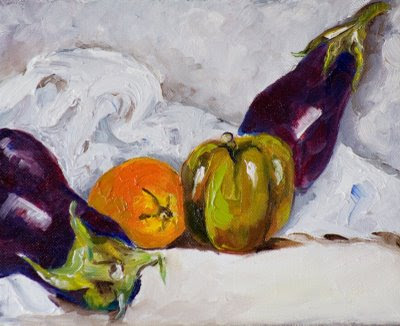
Success begins in the morning. We either "seize the day" or we don't. We seize the initiative, or we don't. We work from a plan, or we don't. If we fail to take charge of our mornings, we allow fate and circumstances, other people and luck to play a huge role, and that's usually a mistake. "If we fail to plan, we are planning to fail."
I am doing a self portrait every month for the next year. This is the first in the series.
A Self-portrait is a representation of an artist, drawn, painted, photographed, or sculpted by the artist. Although self-portraits have been made by artists since the earliest times, it is not until the
Early Renaissance in the mid 1400s that artists can be frequently identified depicting themselves as either the main subject, or as important characters in their work. With better and cheaper
mirrors, and the advent of the
panel portrait, many painters, sculptors and printmakers tried some form of self-portraiture
There are many reasons for painting self portraits, not least being the continuation of a long tradition of self-portraiture among artists (just think of those by Rembrandt and Van Gogh). Then there's the advantage that it's the one model who's always available, at any time of the day).
I've been hooked on self portraits ever since I first attempted one (which was not a success, though my second self portrait I framed and still have on display). I don't paint self portraits for any narcissistic reason, but for the challenge. After all, if I can't capture my own likeness and a feeling of my character, how can I attempt to get someone else's?
I've done self portraits in charcoal, pastel pencils, watercolor, and acrylics.
The results have varied from as realistic (in terms of color and likeness) to strongly
Expressionistic. From pleasing (the self portraits I show others) to strange (the self portraits few people see). I regard getting a feeling of character more important than a
photorealistic likeness, for which I personally prefer using a camera.
I rarely set out with something specific in mind, other than to paint a self portrait, and just let the painting evolve on the canvas, following the mood I'm in. Some self portraits are of the feeling, the mood of the day others are of the likeness I see in the mirror all are a challenge,
Home Page Art by Delilah = http://artbydelilah.com







